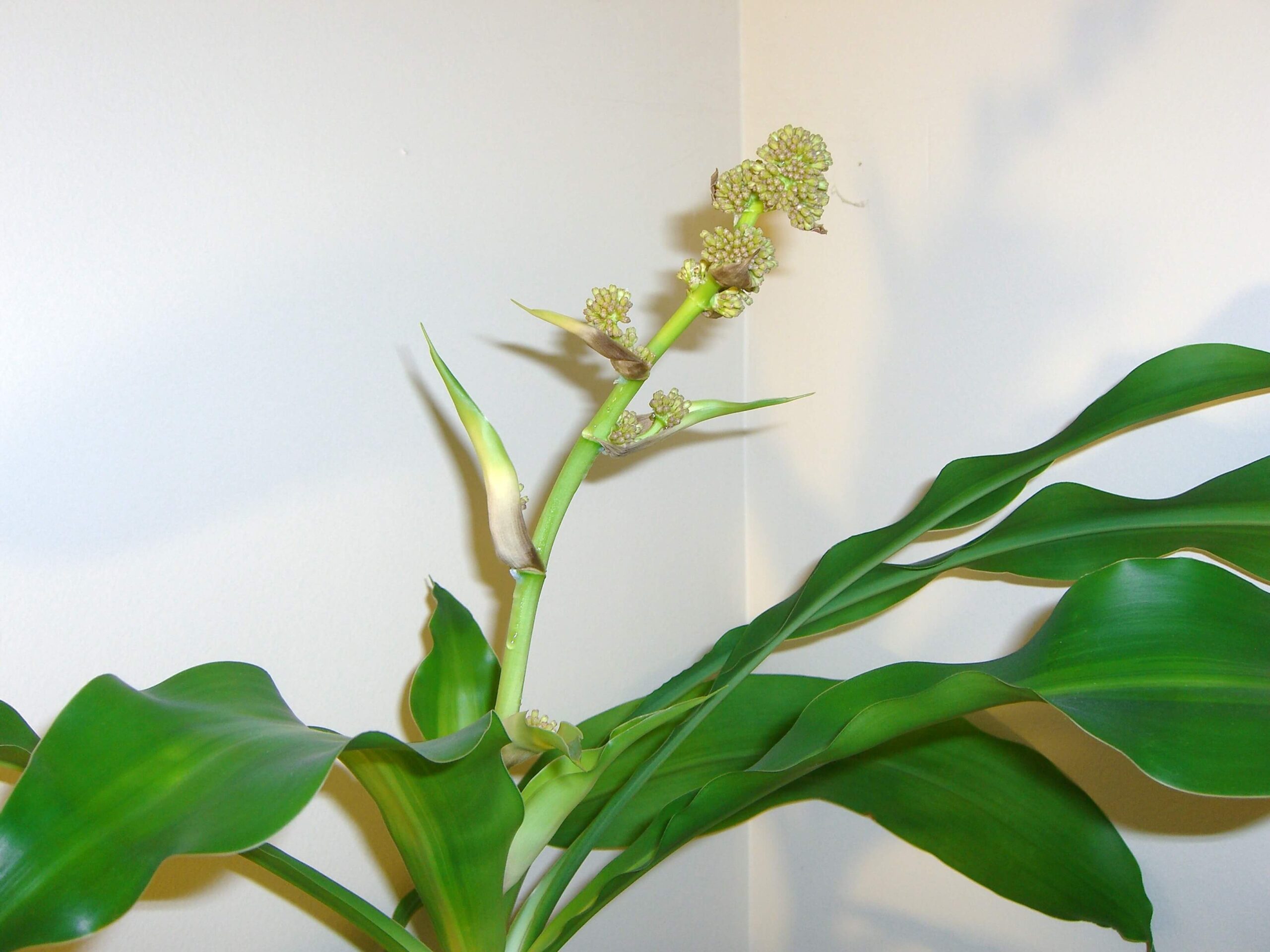Are you looking for a stunning plant to brighten up your home or office? Look no further than the mass cane plant, also known as the corn plant. With its striking foliage and easy-care requirements, this tropical beauty is a great choice for both novice and experienced plant owners.
Table of Contents
History and Origin of Mass Cane Plant
The mass cane plant, or Dracaena massangeana, is native to tropical Africa. It was first introduced to Europe in the early 20th century and quickly became popular as a houseplant due to its attractive appearance and low-maintenance requirements.
Characteristics and Appearance
The mass cane plant is a slow-growing plant that can reach heights of up to 6 feet tall. It features long, narrow leaves that are typically green with yellow stripes running down the center. As the plant ages, the leaves may become more yellow and the stripes may fade.
Choosing the Right Plant
When choosing a mass cane plant, it’s important to select a healthy specimen. Look for a plant that has sturdy, upright stems and bright, green leaves. Avoid plants with yellow or brown leaves or stems that are drooping or wilted.
Planting and Potting
Mass cane plants prefer well-draining soil, so make sure the pot you choose has plenty of drainage holes. Use a good-quality potting mix that’s designed for indoor plants, and make sure to plant your mass cane at the same depth it was in its original container.
Light and Temperature Requirements
The mass cane plant prefers bright, indirect light but can also tolerate lower light levels. It is important to avoid direct sunlight, which can scorch the leaves. The plant also prefers temperatures between 60 and 75 degrees Fahrenheit.
Watering and Soil Requirements
The mass cane plant prefers well-draining soil and should be watered when the top inch of soil feels dry to the touch. It is important to avoid overwatering, as this can lead to root rot. The plant can also benefit from occasional misting to increase humidity.
Pruning and Maintenance
Mass cane plants are relatively low-maintenance, but they do require occasional pruning to keep them looking their best. Trim any yellow or brown leaves or stems as soon as you notice them, and remove any dead or diseased branches. Additionally, dust the leaves of your mass cane plant regularly to keep them looking shiny and healthy.
Fertilizer and Repotting
The mass cane plant benefits from regular fertilization with a balanced fertilizer during the growing season. It should be repotted every two to three years to refresh the soil and give the plant room to grow.
Common Pests and Problems
The mass cane plant is relatively pest-resistant but can be susceptible to spider mites, mealybugs, and scale insects. Overwatering can also lead to root rot, while underwatering can cause the leaves to become brown and crispy.
Propagation
The mass cane plant can be propagated through stem cuttings. Simply cut a stem that is at least 6 inches long, remove the bottom leaves, and place it in water or moist soil until it roots.
Benefits of Mass Cane Plant
In addition to its striking appearance and low-maintenance nature, the mass cane plant offers several benefits. It’s been shown to improve indoor air quality by removing harmful toxins like benzene and formaldehyde from the air. Additionally, studies have found that plants like the mass cane can help reduce stress and anxiety, making them the perfect addition to any home or office.
How to Style and Decorate with Mass Cane Plants
Using Mass Cane Plants as Statement Pieces:
One way to make a statement with Mass Cane plants is to use them as a focal point in a room. Place a large Mass Cane plant in a decorative pot and display it in a prominent location, such as a corner or near a window. The height of Mass Cane plants makes them perfect for filling empty vertical spaces, such as a tall, narrow entryway or hallway.
Mixing and Matching with Other Plants:
Mass Cane plants pair well with a variety of other indoor plants. Mix and match different plant textures, heights, and colors to create a dynamic and visually appealing display. Consider pairing Mass Cane plants with ferns, snake plants, or philodendrons to add a lush, tropical feel to your decor.
Choosing the Right Pot and Placement:
When it comes to potting Mass Cane plants, choose a pot that is both functional and stylish. A pot that is too small will restrict the growth of the plant, while a pot that is too large will hold too much water, leading to root rot. A pot with good drainage holes is also important to prevent overwatering. Additionally, consider the placement of your Mass Cane plant. These plants thrive in bright, indirect light, so avoid placing them in direct sunlight, which can scorch their leaves.
Creating a Cohesive Look with Your Decor:
When styling Mass Cane plants, consider the overall aesthetic of your decor. If you have a modern, minimalist space, opt for a sleek, simple pot and let the plant speak for itself. For a more eclectic or bohemian look, choose a pot with interesting textures or patterns. You can also use accessories, such as decorative rocks or moss, to add interest and texture to your display.
Conclusion
The mass cane plant is a beautiful and low-maintenance plant that can add a tropical touch to any home or office. With proper care, it can thrive for years to come.
FAQs
Q: How often should I water my mass cane plant?
A: Water your mass cane plant when the top inch of soil feels dry to the touch.
Q: Can mass cane plants be grown outdoors?
A: Mass cane plants prefer indoor environments with bright, indirect light.
Q: What should I do if my mass cane plant is not growing?
A: Ensure that your plant is receiving enough light and is not being overwatered or underwatered.
Q: Can mass cane plants be pruned?
A: Yes, mass cane plants can be pruned to control their size or shape.
Q: Is the mass cane plant toxic to pets?
A: Yes, mass cane plants can be toxic to pets if ingested. Keep them out of reach of curious pets.
Q: How often should I fertilize my mass cane plant?
A: Fertilize your mass cane plant once a month during the growing season.
Q: Can mass cane plants tolerate low humidity?
A: Yes, mass cane plants can tolerate low humidity but will benefit from occasional misting.
Q: How often should I repot my mass cane plant?
A: Repot your mass cane plant every 2-3 years or when it outgrows its current pot.
Q: Can I propagate my mass cane plant in water?
A: Yes, you can propagate your mass cane plant in water or moist soil.
Q: What should I do if my mass cane plant’s leaves are turning yellow?
A: Yellowing leaves may be a sign of overwatering, underwatering, or pests. Check the soil moisture and inspect the plant for pests.
Q: Can mass cane plants be grown in low light?
A: Yes, mass cane plants can tolerate low light but will grow best in bright, indirect light.
Q: How do I prune my mass cane plant?
A: Prune your mass cane plant by cutting back overgrown stems or removing dead or yellowing leaves.
Q: How tall can a mass cane plant grow?
A: A mass cane plant can grow up to 6 feet tall.
Q: Can mass cane plants be grown in pots without drainage holes?
A: It is not recommended to grow mass cane plants in pots without drainage holes as this can lead to overwatering and root rot.
Q: What should I do if my mass cane plant’s leaves are drooping?
A: Drooping leaves may be a sign of underwatering. Check the soil moisture and water if necessary.
Q: Can mass cane plants be grown in a terrarium?
A: Mass cane plants may not be suitable for terrariums as they can grow quite tall and require bright, indirect light.
Q: Can mass cane plants be grown in hydroponics?
A: Yes, mass cane plants can be grown in hydroponics but may require additional support as they grow tall.
Q: How do I care for my mass cane plant in winter?
A: In winter, reduce watering and avoid placing the plant near cold drafts or heating vents.
Q: Can mass cane plants be grown from seeds?
A: Mass cane plants are typically propagated through stem cuttings rather than seeds.
Q: Can I prune my mass cane plant to create a bushier shape?
A: Yes, pruning your mass cane plant can encourage bushier growth.
Q: Can mass cane plants be grown in bright, direct sunlight?
A: Mass cane plants prefer bright, indirect light and can be damaged by direct sunlight.
Q: Can mass cane plants be grown in a hanging basket?
A: Mass cane plants may not be suitable for hanging baskets as they can grow quite tall and heavy.
Q: How do I prevent pests on my mass cane plant?
A: Regularly inspect your plant for pests and remove any affected leaves or stems. You can also use insecticidal soap or neem oil to control pests.
Q: Can mass cane plants be grown in a bathroom?
A: Yes, mass cane plants can tolerate the humidity in a bathroom but may require additional light.
Q: Can mass cane plants be grown outdoors in tropical climates?
A: Yes, mass cane plants can be grown outdoors in tropical climates with plenty of shade and well-draining soil.







